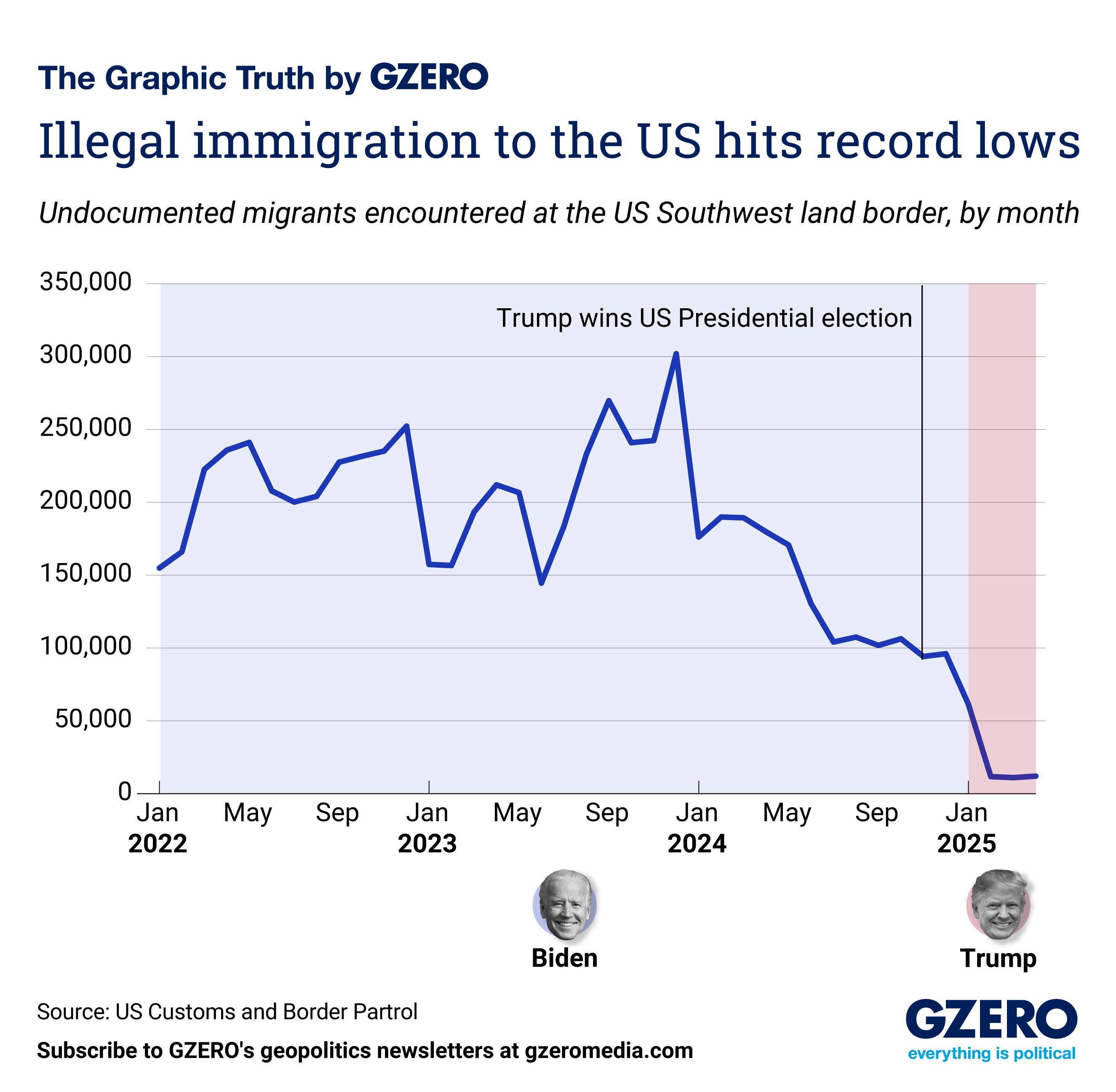Graphic Truth: Illegal Immigration to the US hits record lows
The number of people attempting to cross the Southwest US border illegally has fallen to historic lows, with authorities reporting barely 8,000 “encounters” with undocumented migrants per month. That’s a staggering decline from the 200,000 such encounters per month in most of 2023, a year when illegal immigration hit record highs.
Since taking office, US President Donald Trump has cracked down hard on illegal immigration both at the border and inside the country, in some cases testing the constitutional limits of his authority. This has dissuaded migrants from entering the US illegally, making immigration policy the most popular policy of Trump’s second term.
But a closer look at the data shows that the numbers had been declining significantly throughout 2024, as the Biden Administration, in reaction to the popularity of Trump’s strong borders campaign messaging, moved to tighten access, expedite removals, and streamline asylum applications.
Here’s the monthly data since 2022. What jumps out at you?
